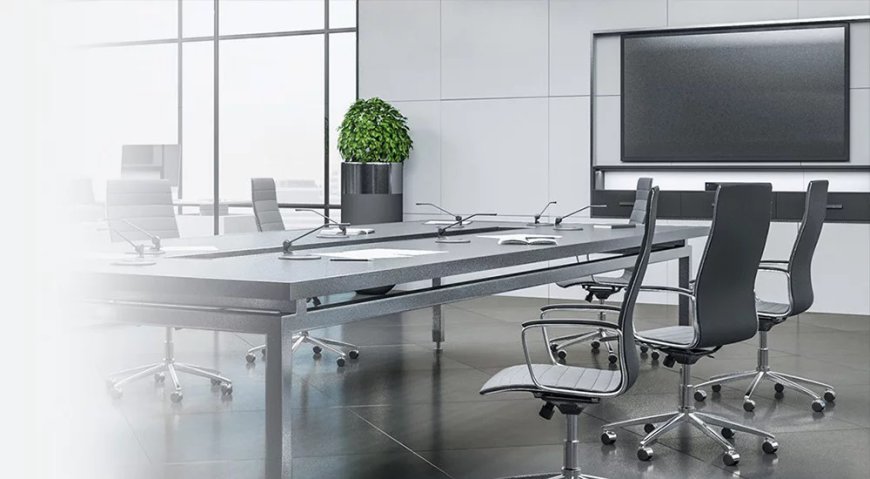Innovative Interior Design Ideas for Office Space
Modern office spaces are about creating environments that cater to diverse work styles and preferences.

The modern workspace has undergone a significant change in the past few years. The design of office spaces is becoming an essential factor that determines employee productivity, creativity, and general well-being. Companies design their office spaces with an open floor plan, incorporating natural light, ergonomic furniture, and flexible workstations. Additionally, companies are prioritizing flexible work arrangements and remote options to accommodate different work styles and preferences among employees. An office interior design should balance both functionality and aesthetics. Smart layout choices, seamless technology integration, and the inclusion of collaborative spaces can promote union, convenience, collaboration, and efficiency.
Create Private Spaces
Modern offices are synonymous with open floor plans because they foster communication, collaboration, and teamwork. However, they might not suit every employee or task, as they might need quiet spaces to focus on work or have private meetings or conversations. In light of these considerations, private workspaces hold significant importance. Companies can incorporate small meeting rooms, install glass partitions, or create designated quiet zones. These enclosed areas allow employees to concentrate on tasks that require a higher level of focus without any distractions. Moreover, designated private spaces can give employees a private area for confidential discussions or video conferences. Incorporating such private spaces can create a balanced work environment and improve overall productivity and employee satisfaction.
Hybrid Workspaces
After the pandemic, the hybrid work model has become a central feature of the modern workplace. As remote work gains prominence, companies are designing their offices to accommodate flexible workspace designs. The hybrid workspaces feature has a blend of collaborative areas, individual workstations, and remote working support. The aim is to allow employees to work comfortably and effectively, regardless of their location. Hybrid workspace concepts involve adaptable furniture like movable desks, modular partitions, and flexible seating arrangements to accommodate different workstyles and preferences. When employees have options to choose their workspace depending on the task at hand, it leads to job satisfaction and productivity. Such an office remains a hub for connection, innovation, and culture, while also giving the employees flexibility.
Technology Integration
In today’s fast-paced business world, technology plays a pivotal role in creating smart offices, which is essential for creating a modern and efficient workspace. This involves incorporating tools like video conference systems, IoT devices, and automated controls to streamline workflows and enhance connectivity. The best office interior design can feature wireless charging stations, digital whiteboards, and occupancy sensors that optimise lighting and temperature based on room usage. These innovations facilitate better communication and collaboration and create a seamless, adaptive environment that can easily accommodate evolving work styles and hybrid work models. This thoughtful integration of technology transforms the office into a dynamic and productive space.
Invest in Good Furniture
Investing in high-quality, ergonomic furniture is essential for enhancing employee comfort and productivity. Comfortable seating, adjustable desks, and proper workstations can prevent health issues like back pain and eye strain. Ergonomic chairs that provide lumbar support, height-adjustable desks, and anti-glare monitor setups are no longer luxuries but necessities. Good furniture should support different working styles—some employees prefer standing desks, while others may benefit from a quiet corner with beanbags. In addition to ergonomic considerations, the visual appeal of furniture plays a crucial role in creating a welcoming and inspiring workspace. Sleek, modern designs, color-coordinated pieces, and natural materials can create a calming and creative atmosphere. Good furniture not only reflects the company’s culture but also sets a positive tone for employees and clients alike.
Balance Aesthetics and Functionality
Striking the right balance between aesthetics and functionality is crucial in office design. A visually appealing office boosts employee motivation, while a functional layout ensures seamless operations. Employing a corporate office interior designer can help in achieving this balance. They can use vibrant colours, incorporate artwork, and use personalised elements to create a lively atmosphere, while practical aspects like easy accessibility, storage solutions, and organized layouts maintain efficiency. Designing an office space involves understanding the company's values, culture, and the well-being of its employees. Companies that invest in thoughtful, innovative office interiors are more likely to witness increased employee satisfaction, improved productivity, and better retention rates.
Modern office spaces are about creating environments that cater to diverse work styles and preferences. By incorporating private spaces, hybrid designs, ergonomic furniture, seamless technology, and collaborative areas, companies can design offices that foster productivity, creativity, and well-being. Thoughtful interior design is not just about aesthetics; it’s about crafting a space where employees feel comfortable, valued, and inspired to deliver their best.

 kddicorporations
kddicorporations